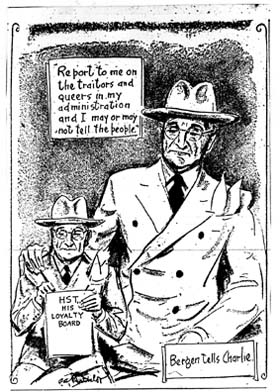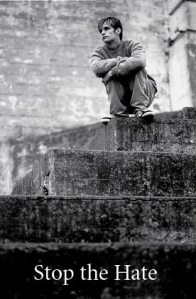“URUMQI, China — An exhibit on the first floor of the museum here gives the government’s unambiguous take on the history of this border region: ‘Xinjiang has been an inalienable part of the territory of China,’ says one prominent sign.
But walk upstairs to the second floor, and the ancient corpses on display seem to tell a different story.”
– Edward Wong. “The Dead Tell a Tale China Doesn’t Care to Listen To“, The New York Times, 18 November 2008

Uncomfortably for the Communist Chinese authorities, hundreds of mummies unearthed in remote parts of the Tarim Basin in what is now the Xinjiang region of China offer a far more nuanced history of settlement than the official Chinese version. By that official account, Zhang Qian, a general of the Han dynasty, led a military expedition to Xinjiang in the second century B.C.E. His presence is often cited by the ethnic Han Chinese when making historical claims to the region ( even though ancient Chinese sources describe the existence of “white people with long hair” — the Bai people of the Shan Hai Jing — beyond their northwestern border).

Tian Chen mummy, close-up of head. One of the mummies from four burial sites between the Tian Shan (‘Celestial Mountains’) of north-west China and the Taklimakan Desert.
The Tarim mummies show, though, that humans entered the region thousands of years before Zhang Qian, and almost certainly from the west. In fact, the mummies provide evidence of heterogeneity throughout the region’s history of human settlement. As a result, the Chinese authorities have been unwilling to give broad access to foreign scientists to conduct genetic tests on the mummies.
What is indisputable is that the Tarim mummies are among the greatest recent archaeological finds in China, perhaps the world.
The corpses, dating from about 2000 B.C.E. to 300 B.C.E., are astonishingly well preserved — and Caucasian. In contrast to most central Asian peoples, these corpses have obvious European features — blond hair, long noses, deep-set eyes, and long skulls. Unlike the roughly contemporaneous mummies of ancient Egypt, the Xinjiang mummies were not rulers or nobles; they were not interred in pyramids or other such monuments, nor were they subjected to deliberate mummification procedures. For this reason, these so-called mummies are technically desiccated corpses. Unlike Egyptian mummies, their lifelike appearance is due not to any artificial intervention on the part of those who buried them. Rather, it is the outcome of environmental conditions in the parched, stony desert of the region, with the best-preserved bodies being those who died in winter and were buried in especially salty, well-drained soils — all of which would inhibit putrefaction and prevent deterioration; after thousands of years, not even slight amounts of moisture penetrated these burials. The bodies were quickly dried, with facial hair, skin, and other tissues remaining largely intact. The famous mummies of Egypt appear dry and shriveled, blackened like discarded walnut husks, compared with these lifelike remains.

A Tarim Basin mummy photographed by Aurel Stein circa 1910.
At the beginning of the 20th century European explorers such as Sven Hedin and Sir Aurel Stein recounted their discoveries of desiccated bodies in their search for antiquities in Central Asia. However, no further attention was given to the mummies until 1978 when Wang Binghua, one of China’s most distinguished archaeologists, found one. Before Wang’s work in the region, evidence of early settlements had been virtually unknown. In the late 1970s, though, Wang had begun a systematic search for ancient sites in the northeast corner of Xinjiang Province. Knowing that ancient peoples would have located their settlements along a stream to have a reliable source of water, Wang followed one such stream from its source in the Tian Shan, asking locals along the way whether they had ever found any broken bowls, wooden artifacts, and so forth. Finally, one older man tipped him off to a place they called Qizilchoqa, or “Red Hillock.” It wasn’t much to look at — a sandy slope in a green ravine next to a village called Wupu.
In the early 1990s, several Western academics accompanied Wang to the region to observe the excavations. Among them were Victor Mair, a professor of Chinese literature at the University of Pennsylvania, Dr. Jeannine Davis-Kimball, executive director of the Center for the Study of Eurasian Nomads, and English archaeologist Charlotte Roberts.
Despite the political tensions over the mummies’ origin, the Chinese said in a report published in February 2010 in the journal BMC Biology that the people were of mixed ancestry, having both European and some Siberian genetic markers, and probably came from outside China. All the men who were analyzed had a Y chromosome that is now mostly found in Eastern Europe, Central Asia and Siberia, but rarely in China. The mitochondrial DNA, which passes down the female line, consisted of a lineage from Siberia and two that are common in Europe. Since both the Y chromosome and the mitochondrial DNA lineages are ancient, the research team concluded that the European and Siberian populations probably intermarried before entering the Tarim Basin some 4,000 years ago.
East Asian peoples only began showing up in the eastern portions of the Tarim Basin about 3,000 years ago, while the Uighur peoples arrived after the collapse of the Orkon Uighur Kingdom, largely based in modern day Mongolia, around the year 842. But politically, the region came under Chinese control only under the Qing Emperor Qianlong in the 18th century. Uighur separatists resist the term Xinjiang — which means “New Frontier,” given to the region by the Chinese in 1884 — and prefer East Turkestan.
Interestingly, in the preface to the 2002 book, The Ancient Corpses of Xinjiang, written by Wang Binghua, the Chinese historian and Sanskrit specialist Ji Xianlin soundly denounced the use of the mummies by Uighur separatists as proof that Xinjiang should not belong to China.
“What has stirred up the most excitement in academic circles, both in the East and the West, is the fact that the ancient corpses of ‘white (Caucasoid/Europoid) people’ have been excavated,” Ji wrote. “However, within China a small group of ethnic separatists have taken advantage of this opportunity to stir up trouble and are acting like buffoons. Some of them have even styled themselves the descendants of these ancient ‘white people’ with the aim of dividing the motherland. But these perverse acts will not succeed.”
Further on, in an apparent swipe at the Chinese government’s lack of eagerness to acknowledge the science and publicize it to the world, Ji wrote, “a scientist may not distort facts for political reasons, religious reasons, or any other reason”.
And, Ji Xianlin, the facts speak for themselves.
References:
- Barber, Elizabeth Wayland. The Mummies of Urumchi (W. W. Norton & Company, 2000).
- Chunxiang Li, Hongjie Li, Yinqiu Cui, Chengzhi Xie, Dawei Cai, Wenying Li, Victor H Mair, Zhi Xu, Quanchao Zhang, Idelisi Abuduresule, Li Jin, Hong Zhu and Hui Zhou. “Evidence that a West-East admixed population lived in the Tarim Basin as early as the early Bronze Age” BMC Biology 8:15 (Feb 2010) doi:10.1186/1741-7007-8-15.
- Mair, Victor. “The Mummies of East Central Asia,” Expedition [publ. by University of Pennsylvania Museum of Archaeology and Anthropology] Vol. 52, no. 3: 23-32 (Winter 2010).
- Mallory, James P. and Victor H. Mair. The Tarim Mummies: Ancient China and the Mystery of the Earliest Peoples from the West (Thames & Hudson, 2008).
- NATIONAL GEOGRAPHIC – China’s Secret Mummies (2007)
- NOVA (PBS) – Mysterious Mummies of China (1998)
- “Secrets of the Silk Road.” Online Exhibit, University of Pennsylvania Museum of Archaeology and Anthropology.



















































You must be logged in to post a comment.